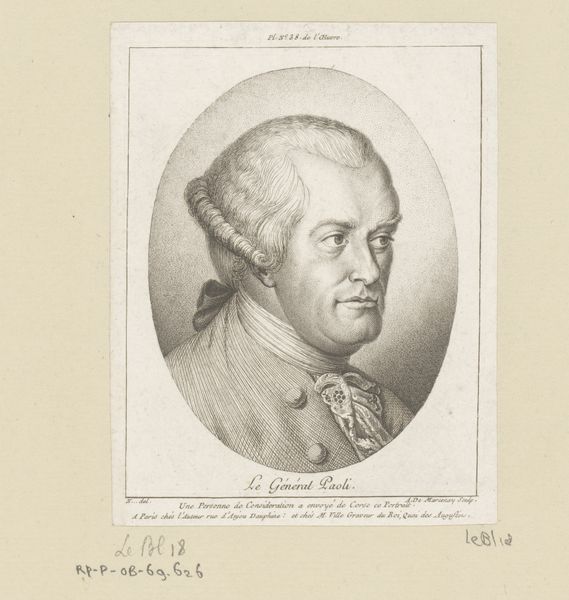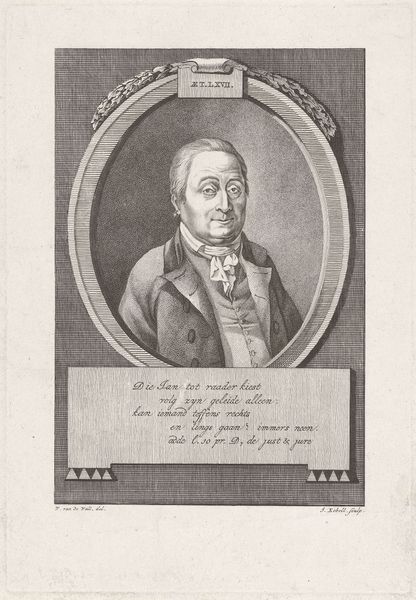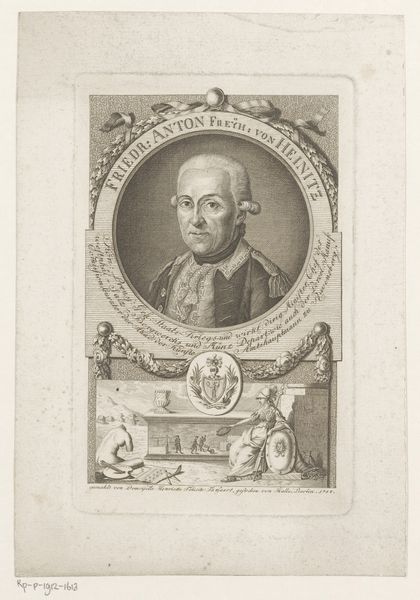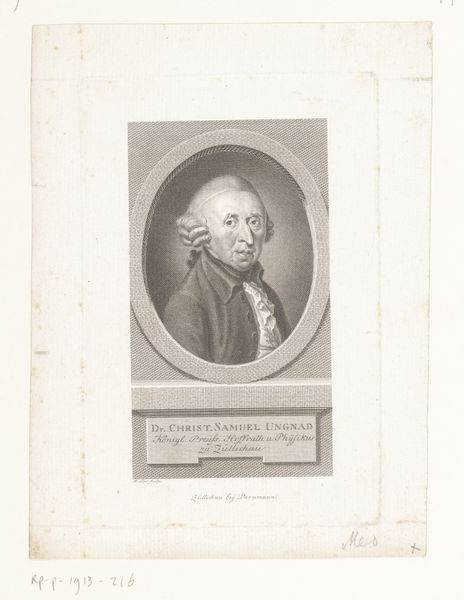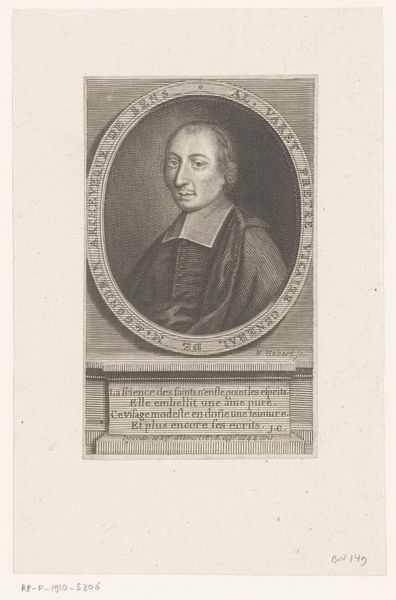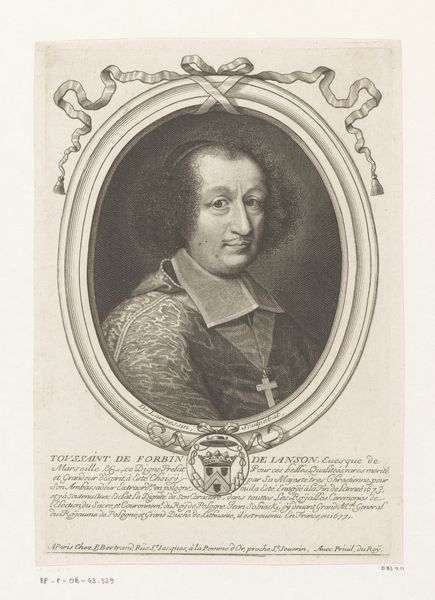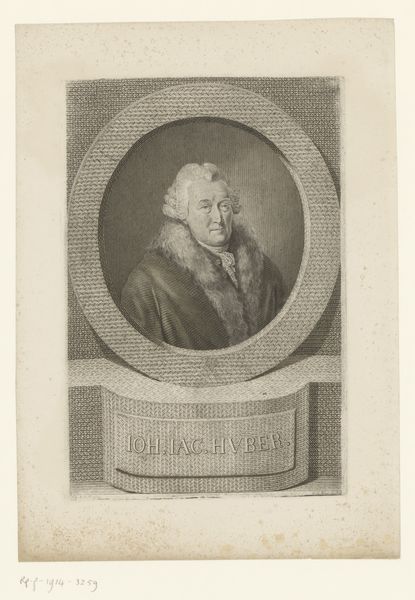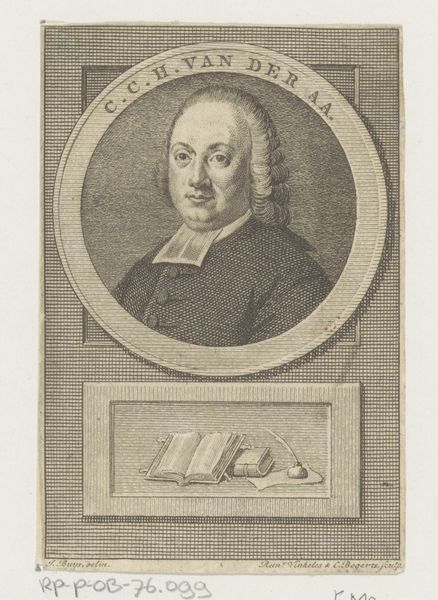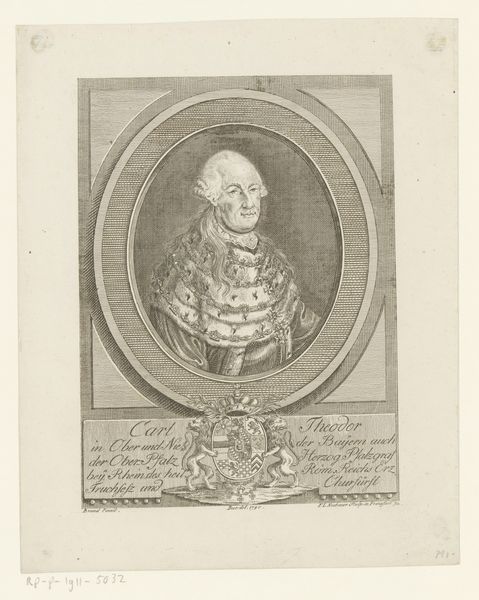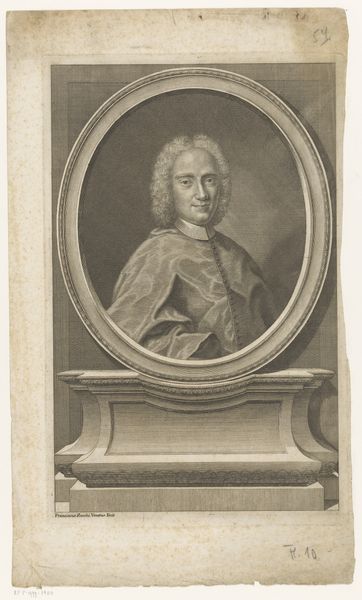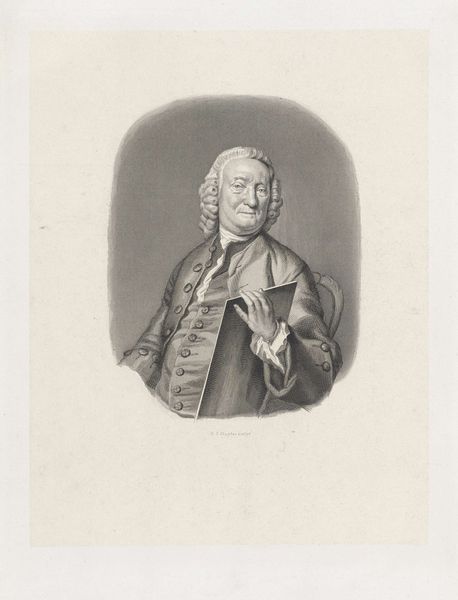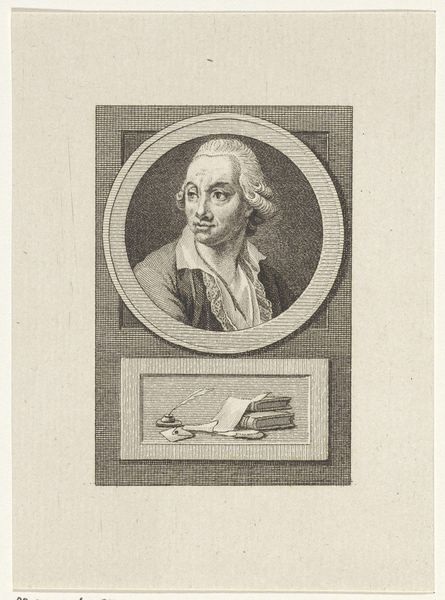
Dimensions: height 83 mm, width 88 mm
Copyright: Rijks Museum: Open Domain
Curator: This engraving by Christian Gottlieb Geyser, dating between 1752 and 1803, is a portrait of Friedrich Samuel Gottfried Sack. Editor: It’s immediately striking, this little circle of a man staring back at us with such...gravity? There’s a somber, almost severe quality to his expression, softened slightly by the wig. Curator: Well, let’s think about that wig! These fashion items weren’t simply frivolous decorations; they represented an intense amount of material resources and human labor. Everything from the processing of fibers to its meticulous design tells a story about the systems of power and manufacturing available at the time. The tools involved, the ink used to capture its texture – all part of this complex process. Editor: Absolutely. Looking closer, the level of detail Geyser achieved is remarkable, especially considering the social and political standing such portraiture served to uphold. The act of creating and distributing this image of Sack reinforces societal structures, creating a historical dialogue about the elite. Who has the means and opportunity to have their likeness immortalized, and to what end? Curator: Exactly! We can consider how engravings like this facilitated the wider dissemination of images. Each print acted as a form of multiplication and circulation, taking it from a unique, high-value piece to something more accessible, contributing to an evolving visual culture. And it really emphasizes Geyser’s skills and those of the printers, engaging directly with the artistic conventions that defined baroque sensibilities and styles. Editor: And that brings in important questions around audience and reception. What would it mean to an ordinary person to encounter an image like this? There’s a subtle but undeniable emphasis on hierarchy, making visible the lines of class, religious role, and influence in 18th-century society. Even his clothing reinforces his position. It encourages discussion about who is seen, who isn't, and what this disparity communicates. Curator: These material processes underscore the labor practices and economic forces that enabled art production in this period. Editor: So, while Geyser's portrait provides us with a visual of a historical figure, it's equally fascinating when understood as a cultural artifact that speaks to themes of power, production, and perception in the broader context of 18th century life. Curator: It really encourages us to think about how artists and artisans throughout history, embedded and reliant upon the system they occupied, nevertheless made choices to reflect and, sometimes, resist their cultural and political reality.
Comments
No comments
Be the first to comment and join the conversation on the ultimate creative platform.

